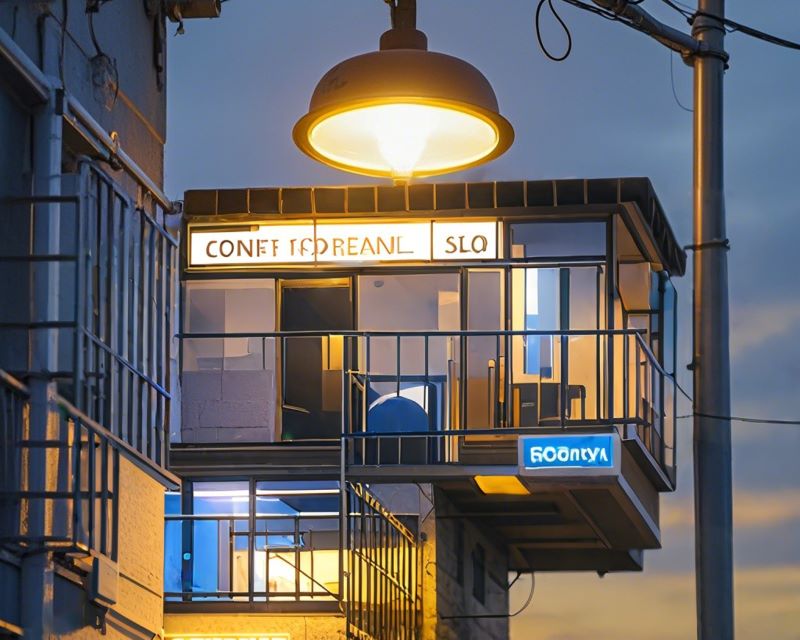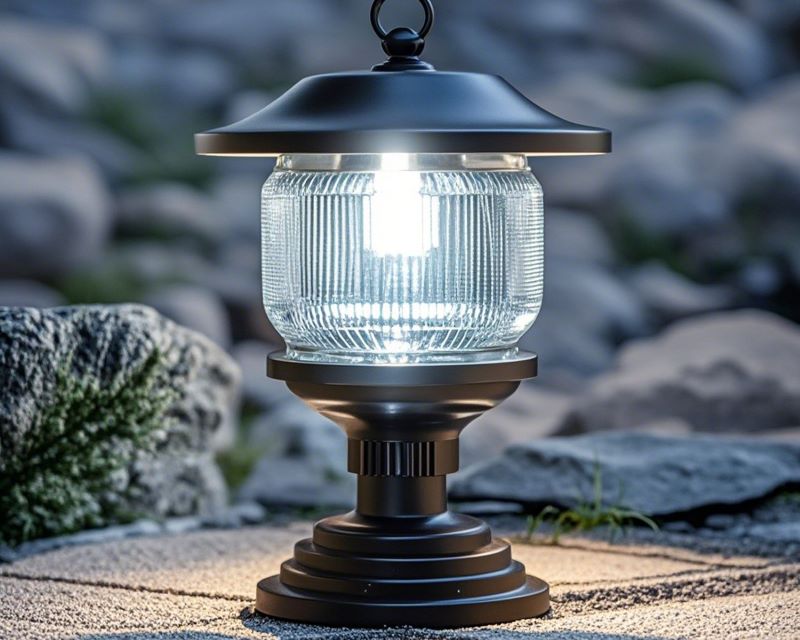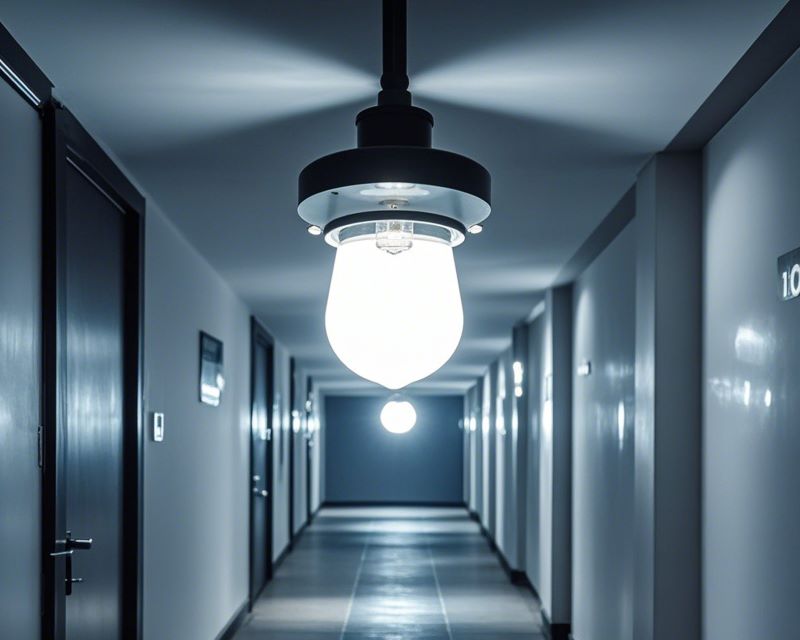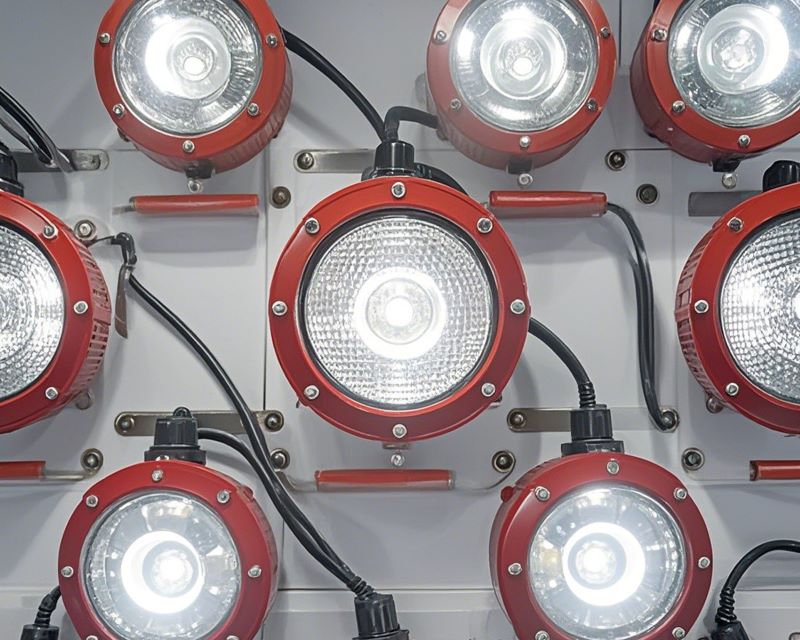In today’s world, home security is top of mind for many of us, and security lights are one of the easiest and most effective ways to increase safety around your home. By lighting up the dark areas around your property, security lights offer more than just visibility; they give you and your family peace of mind at night. From reducing accidents to deterring potential intruders, security lights play an essential role in protecting your home. With so many options available today, from simple motion-activated lights to advanced smart lights, there’s a solution for every homeowner’s needs. In this guide, we’ll dive into how security lights can enhance home safety and help you find the best lighting options to keep your family and property secure.
1. Why Security Lights Matter
Security lights are a straightforward, effective way to protect your home. Whether you live in a bustling city or a quiet suburb, outdoor lighting can make a big difference in how safe your home feels at night. A well-lit property can deter potential intruders, who tend to avoid areas where they’re more likely to be seen. For this reason alone, security lights can significantly reduce the chances of break-ins or trespassing.
Beyond just illuminating your property, security lights also create a safer environment by reducing shadows and dark spots. This means you can spot any unusual activity around your home, even after dark. In addition, security lights can be beneficial to your neighbors by shedding light on common areas and helping everyone stay vigilant.
Motion-activated lights offer even more protection by lighting up the moment they detect movement, giving you an immediate alert to activity near your home. Dusk-to-dawn lights, which stay on all night, are another great option, providing continuous visibility and peace of mind. With different types of security lights available, you can choose the one that best suits your specific needs, giving your home an extra layer of protection.

2. Types of Security Lights
There are several types of security lights, each with unique features that can help keep your home safe. Motion-activated lights are a popular choice, turning on automatically when they detect movement. These lights not only save energy but also alert you to potential intruders by surprising them with an immediate burst of light.
Dusk-to-dawn lights are also widely used, automatically turning on at dusk and off at dawn, so you don’t have to worry about switching them on and off. They’re perfect for areas that need consistent lighting throughout the night, providing a sense of security when you return home late or when there’s nobody around to turn on the lights.
Solar-powered security lights are an eco-friendly choice, using energy from the sun to power the lights. They’re especially useful in areas where you want to reduce electricity costs or where power outages are common. By charging during the day and lighting up at night, solar lights are both cost-effective and reliable.
Smart security lights take convenience and control a step further, allowing you to monitor and manage your lighting from anywhere with a smartphone. These lights often come with features like motion alerts and remote controls, giving you even more flexibility and safety for your home.
3. Key Features to Look for in Security Lights
When choosing security lights, there are a few key features to consider. Brightness and lumens are the first things to think about—higher lumens mean brighter light. Different areas around your home may require different levels of brightness. For example, entryways and garages may need higher brightness for clear visibility, while garden or patio lights can be softer to create a cozy atmosphere.
Weather resistance is essential for outdoor lights. Security lights are exposed to the elements, so they should be waterproof, dustproof, and UV-resistant to keep working well in any weather. A durable light not only lasts longer but also requires less maintenance over time, making it a cost-effective choice.
Motion detection range is another important factor. A wide detection range helps reduce blind spots and expands your light’s coverage, making your home feel safer. If you have a large property, consider lights with a wider range to cover as much space as possible.
Energy efficiency and smart controls are also key features for many homeowners. LED lights are ideal for security purposes because they’re bright, long-lasting, and energy-efficient. Smart features, like remote control and automation, allow you to adjust your lights from anywhere, giving you control over your lighting while saving energy.

4. Where to Place Security Lights for Maximum Effectiveness
The location of your security lights is crucial for creating a safe environment. Start by placing lights above main entry points like the front and back doors. Proper lighting at these spots can effectively deter intruders and make it easier for you to identify visitors. Placing lights above these doors can eliminate dark corners and create a safe, welcoming atmosphere.
Garage and driveway areas also need good lighting. Security lights in these areas not only help you safely navigate at night but also protect your vehicles and garage. Lights placed above the garage door or along the driveway keep these areas well-lit, adding to the security of your home.
Side yards and darker corners are often overlooked, but they can be hiding spots for intruders. Placing lights in these spots can reduce blind spots around your home and give you more comprehensive coverage, making it harder for anyone to hide near your property.
Finally, make sure to light up outdoor paths and walkways. Proper lighting along these areas not only enhances safety for you and your family but also helps you spot any unusual activity around your home, providing an extra layer of protection at night.
5. Installation Tips for Security Lights
Installing security lights properly is essential for them to be effective. First, make sure to place lights at the right height—about 6 to 10 feet high is ideal. If they’re too low, they may not cover a wide enough area, and if they’re too high, the light may scatter too much, reducing its effectiveness. Proper height ensures your lights are hard to tamper with while still covering the area you want to illuminate.
Adjusting the sensitivity of motion-activated lights is another key step. Set it to a level that avoids false alarms from small animals or passing cars while still detecting human movement. This helps you save energy and ensures that the light only turns on when there’s something important to notice.
Finally, angle the lights slightly downward to cover ground areas effectively. This positioning helps focus the light on the areas you want to monitor without causing glare or light scatter, making your security lights more efficient.
6. Common Mistakes to Avoid When Installing Security Lights
When setting up security lights, it’s important to avoid overly bright lights that cause glare. While bright lights can help deter intruders, extremely intense light can create harsh shadows that may actually give intruders a place to hide. Choose a light level that provides good coverage without overwhelming brightness.
Sensitivity settings can also be tricky. If the motion sensitivity is set too high, you might get constant alerts from small animals or wind-blown objects, wasting energy and diminishing your trust in the alerts. Calibrate the sensitivity to focus on human movement, so you’re only alerted when necessary.
Finally, avoid installing lights in easily accessible spots where they could be tampered with. Choose secure, out-of-reach places that are still well-positioned for lighting. Durable placement keeps your lights safe and effective for years to come.

7. How Security Lights Deter Intruders
Security lights work as a deterrent by eliminating hiding spots and increasing visibility around your property. Bright lighting means potential intruders are more likely to be noticed, which often deters them from attempting anything suspicious. This psychological barrier adds an extra layer of security to your home.
Motion-activated lights are particularly effective because they suddenly illuminate when movement is detected. This immediate response can startle intruders and attract the attention of neighbors, adding an extra layer of protection.
Positioning your security lights in strategic spots makes your home safer by maximizing visibility and removing potential hiding places. For intruders, approaching a well-lit house is far riskier, making security lights a simple yet powerful deterrent.
8. The Role of Smart Security Lights in Home Automation
Smart security lights add convenience and flexibility to your home’s security system. With Wi-Fi-enabled lights, you can monitor and control your lighting from anywhere via your smartphone. These lights allow you to check in on your home and get alerts about unusual activity, even when you’re away.
Smart lights also offer versatile settings, such as timers or integration with other devices like cameras. You can set lights to turn on at specific times or automatically trigger other security devices, creating a comprehensive security system that adapts to your needs.
For frequent travelers, remote control is especially valuable. No matter where you are, you can simulate occupancy by adjusting lights remotely, reducing the chances of an intruder targeting your home. Smart lights give you peace of mind and more control over your home’s security.

9. Maintenance Tips for Long-Lasting Security Lights
Regular maintenance is essential for keeping security lights in top shape. Dust and dirt can accumulate on outdoor lights, so cleaning them periodically will keep the sensors working efficiently and the light output strong.
Replacing batteries or bulbs when needed is also crucial, especially for solar-powered or battery-operated lights. Ensuring that your lights are always powered will prevent any unwanted surprises at critical moments.
Finally, test your motion sensors regularly. Over time, you may need to adjust sensitivity settings or detection ranges to keep them performing well. A quick test every few months ensures your lights will always respond to activity around your home.
Conclusion:
Installing security lights is more than just about lighting up your property—it’s an investment in your family’s safety and peace of mind. Security lights illuminate dark areas around your home, deterring intruders and making it easier to move around safely at night. With the added flexibility of smart lighting, you can control your lights remotely, monitor your property in real time, and protect your home even when you’re
Investing in the right security lights and placing them strategically gives you full coverage and helps everyone in your household feel safe. From motion-activated lights that surprise trespassers to smart lights you can control from anywhere, security lights are an essential part of modern home protection.
If you’re looking to make your home safer and more inviting, security lighting is a great start. But security lights are only one piece of the puzzle when it comes to a complete home lighting solution. To learn more about creating the perfect lighting setup for every area in your home, check out our Home Lighting guide. This resource covers everything from ambient lighting to accent lights, helping you achieve the ideal lighting ambiance while enhancing security and comfort.

